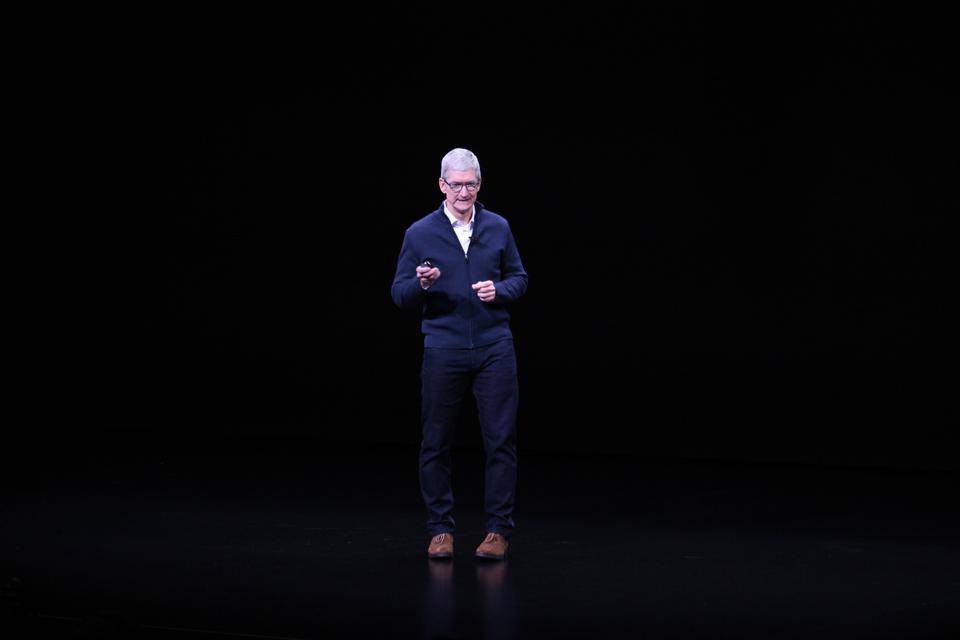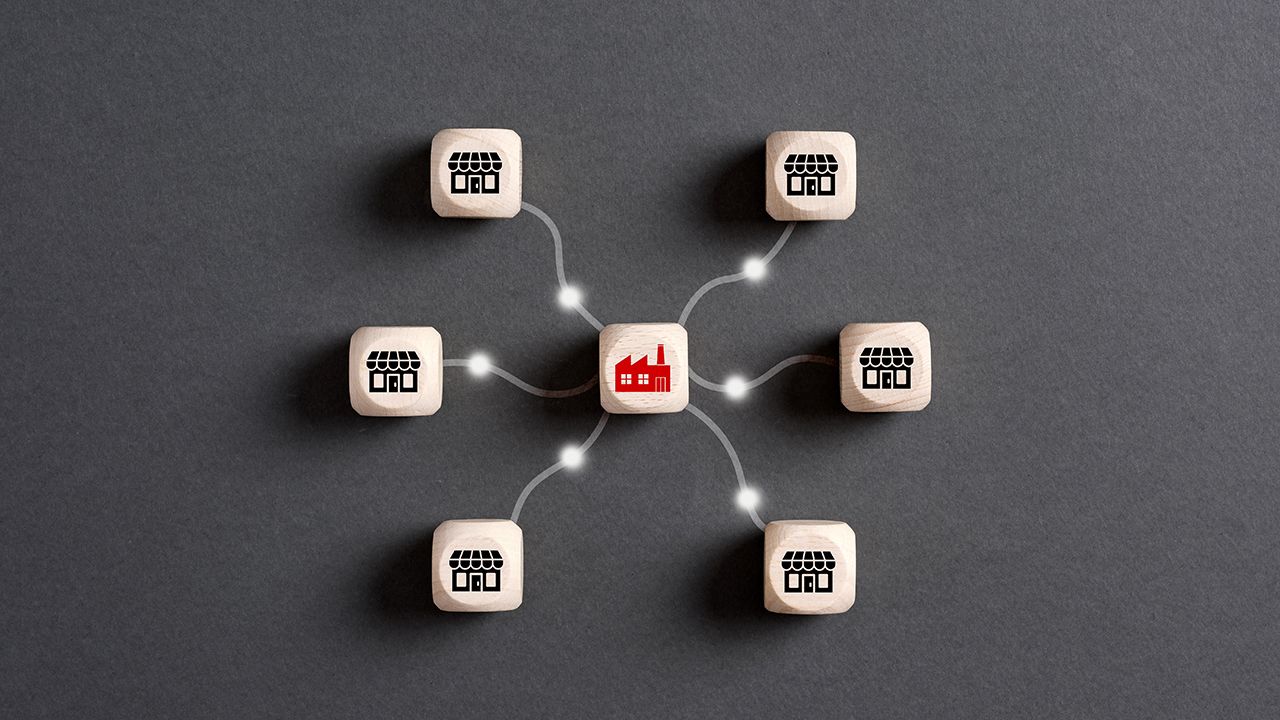Tech
WWDC 2021 Announced For June: Expect Apple’s Big Clues For iPhone 13, Mac Or… AR Glasses – Forbes

Apple’s Worldwide Developers’ Conference (WWDC) has just been announced and it’s going to be online only. Again. WWDC is the platform Apple uses to reveal the next software for the iPhone, iPad, Mac, Apple Watch and Apple TV. And what it announces at WWDC gives us the clearest hints of where the iPhone 13, Apple Watch Series 7, iMac and other products are heading. And this time, it even looks like Apple just could be warning us about a whole new product line: its augmented reality headset.
Last year, the company announced WWDC in May for dates in late June, saying it would be the biggest-ever, and all free. This time, the event has snuck back to its early June slot and will run Monday, June 7 through Friday, June 11. And it’s free again.
Last year’s attendance was record-breaking, Apple says. Well, when you’re not limiting people to squeezing into a series of largish rooms, that’s not surprising.
Not to mention that if you don’t have to pay the $1,600 fees usually charged to attendees, even before there’s the cost of travel and hotels to think of, then big attendance seems likely. Well, there’s nothing wrong with an inclusive event.
The annual Swift Student Challenge where young developers show off their coding skills in Swift Playground is now open for submissions, Apple said. The tagline this year is Glow and Behold, and the image shows a youthful Memoji-type image, so young devs are the target.
The image, as you’ll see is wearing glasses. Well, strictly speaking pince-nez, but we’ll let that pass. And you’ll also see that the date of the conference is reflected in the glass. Sure, this could just be what is being glimpsed on the MacBook screen, but it may also be a tip-off from Apple.
AR glasses, likely called Apple Glass, have been rumored for a while now. The thing about a whole new product category like this is it will need apps to work. And app developers, even the speediest, need time to get their apps together.
So, could we expect to see Apple Glass revealed as a sneak peek of upcoming hardware, with developers invited to pitch in and create stuff for the new device? If so, I’d expect Apple to explain that Apple Glass would land in 2022, giving devs time to prepare.
Let me come clean: though I think this is possible Apple Glass could appear, my gut tells me that a hardware event is the real home for such an announcement, and I’d expect that to happen in the Fall at the earliest, with possible hardware release in Spring or Summer 2022. Or much later. More details on this in the AppleUnboxed newsletter out tomorrow. Sign up here, if you’d like to read it.
Anyway, back to the event itself. Since Apple claims it has 28 million developers, maybe online is the way to go if you want more than a tiny fraction of them enjoying the conference.
Apple CEO Tim Cook has the floor in a previous keynote, but this year’s will be another mini-movie.
David Phelan
Of course, WWDC speaks to an audience way beyond the developers, through the keynote that opens the conference each year at 10AM Monday—though Apple is scrupulous in devising an event that appeals to the developers through precise information and great detail.
But it’s the road map that the keynote sets out to the public which will tell us more about the next round of Apple hardware products until they actually arrive.
Apple plays its cards close to its chest but there are always clues. If Apple talks about advanced iPhone camera software that boosts certain features and introduces new ones, it will do so only in terms of how it will benefit current iPhone hardware. But you can bet it’ll be a clear indicator that the cameras on the iPhone 13 will be worth watching.
At WWDC last year, Apple announced sleep tracking was coming to Apple Watch in watchOS 7. But it was only when Apple Watch Series 6 was revealed that we learnt that the faster-recharging battery in Series 6 made it a perfect fit on that model.
Mind you, there’s disinformation, too. See the other image below for WWDC 2021? Well, again, what’s with the pince-nez? But more importantly, the earbud the kid is wearing, that’s emphatically not Apple telling us what the next AirPods will look like.
But…
Could they be the earpieces for Apple Glass? Ooh, Apple, you tease, you.


Another image for this year’s WWDC.
Apple
This year, we can expect details on macOS, watchOS, iOS, iPadOS and tvOS. Those will certainly be part of the event.
But we may get more. There’s talk of a new M processor that will succeed the M1 chip in future Mac hardware and Apple might reveal the chip or even the chip and another iMac or MacBook Pro that will sport the new processor.
My money’s on a new iMac at WWDC.
It’s more than two months before WWDC happens, but expect more rumors to land between now and then.
Before you go, why not sign up for my AppleUnboxed newsletter, bringing you insider information, reviews, tips, comparisons, news and rumors about the Cupertino giant? Out on Wednesdays.
In the latest issue: the rumored release date for the iPhone 13, tips and tricks for Apple Notes and the Breathe app reviewed.
Plus, new iMac rumors, cool links from around the web and a one-minute review of Apple Watch Series 6. You get the first three issues free and you don’t need your credit card to sign up.
Tech
Cytiva Showcases Single-Use Mixing System at INTERPHEX 2024 – BioPharm International


The Xcellerex magnetic mixer, single-use mixing system was designed to address challenges in large-scale mAb, vaccine, and genomic medicine manufacturing processes.
Cytiva unveiled the Xcellerex single-use magnetic mixer at INTERPHEX 2024 in New York City on April 16, 2024. The single-use mixing system was designed to combat challenges in large-scale monoclonal antibody (mAb), vaccine, and genomic medicine manufacturing processes. The mixer is offered in 2000 L and 3000 L capacities and can be configured in several ways to accommodate diverse mixing processes. Its compact size benefits facilities with space constraints or complicated installation of large-scale consumables.
According to the company, minor leaks may cause significant delays and losses. “When dealing with a 3000 L batch of cell culture media, the estimated financial loss can cost between $60k to upwards of $100k” (1). The system helps prevent expensive leaks with a novel mixer biocontainer that incorporates user-centered design elements to improve durability and ease of use. The design provides enhanced safeguards and added protection from leaks that may occur during shipping, storage, and operation.
Time taken to mix batches can inhibit product development times, specifically the challenge of mixing floating powders such as cell culture media. Current systems have underpowered impellers with circular or cubical shapes that make producing large volumes challenging, according to Cytiva. This new single-use system “has a powerful impeller that when combined with the mixer’s hexagonal shape creates a vortex, enhancing the interaction at the liquid surface. This vortex effectively pulls down the floating powders into the main body of the liquid to allow for a more efficient and shorter mixing process,” the company stated in a press release.
“We’re tapping into our differentiated portfolio to solve a wide range of challenges for our customers. Our new magnetic mixing system is flexible and capable of meeting the many demands and constraints during buffer and cell culture media preparation,” said Amanda Halford, president, Bioprocess at Cytiva in the release. “By reimagining the design, we’ve tackled some of the biggest obstacles to downtime.”
Advertisement
Cytiva is also working to advance messenger RNA (mRNA) manufacturing. In an interview with Pharmaceutical Technology EuropeTM , Scott Ripley, general manager, Nucleic Acid Therapeutics and Precision Nanosystems at Cytiva, discussed technology that enables the “democratization” of mRNA manufacturing (2). Many mRNA therapies and other types of genetic medicines in clinical development are designed to be delivered with the help of lipid nanoparticles. One such platform is Cytiva’s Precision Nanosystems NanoAssemblr microfluidic-based nanoparticle manufacturing platform, which enables the development of genetic medicines with potentially increased stability, efficacy, yield, and quality of non-viral genetic medicines, according to Ripley.
Ripley was enthusiastic about this platform’s ability to “democratize” the good manufacturing practice (GMP) manufacturing aspects for advanced therapies, while managing to cope with the increased molecular diversity of the molecules being handled.
“For example,” Ripley says, “the mRNA platform is unique in that, on one end of the spectrum, it is vaccinating the planet, on the other end, it’s personalized cancer vaccines.”
Reference
1. Cytiva. Cytiva Unveils Latest Innovation for Large Scale Mab, Vaccine, and Advanced Therapy Manufacturing Processes–The Xcellerex Compact Single-Use Magnetic Mixing System. Press Release. April 16, 2024.
2. Spivey, C. Democratizing GMP Manufacturing for the New Therapeutic Pipeline. PharmTech.com. Nov. 21, 2023.
Tech
Nintendo Indie World Showcase April 2024 – Every Announcement, Game Reveal & Trailer – Nintendo Life
Nintendo’s April 2024 Indie World Showcase was a 20-minute presentation of games from independent developers coming to Switch sometime in 2024, with several previously announced games getting release dates.
It was a fairly low-key showcase overall, although there were definitely some choice nuggets in there.
Below you’ll find the video of the full Indie World Showcase April 2024 presentation, plus every individual game announcement with a trailer, a date, and a link to our more detailed coverage.
Nintendo Indie World Showcase April 2024 – The Whole Presentation
First, the presentation itself if you want the whole thing:
Every Switch Game Announcement & Update
And now every trailer for every game from the April 2024 Indie World Showcase, plus some blurb and a link to our coverage if there is one:
Little Kitty, Big City – 9th May 2024
Will you make your way home or will you explore what the big city has to offer first? I mean, getting home is obviously your main priority. Obviously. Well, it’s one of your priorities. Maybe more of a guideline… It’s definitely on your To-Do list somewhere! But first? Exploration!
Yars Rising – 2024
Play as the young hacker, Emi Kimura, as she starts to uncover the dark secrets of mysterious corporation, Qotech. In this brand new side-scrolling Metroidvania from acclaimed developers, WayForward, take the Yars universe to a whole new level and unlock something hiding deep inside of you.
Refind Self: The Personality Test Game – Summer 2024
Games can really show someone’s personality, don’t you think? By way of a simple exploration-based adventure, this data-science game analyzes your actions to estimate your personality.
Sticky Business – 17th August 2024
Sticky Business is a creative relaxing 2D game developed by Spellgarden Games. Players will create stickers, pack orders, and listen to the stories of customers. Sticky Business is available now for Nintendo Switch, Mac, and PC alongside its DLC.
Antonblast – 12th November 2024
ANTONBLAST is an explosive, action-packed retro platformer featuring a destructive twist to classic gameplay and a lovingly hand-animated pixel aesthetic inspired by the Game Boy Advance, blown up and reimagined for the modern era!
Silky smooth 60fps action platforming and explosive escapes combine in a bombastic adventure. Blast through buildings, fight your demons, and explore wonky worlds in ANTONBLAST!
Valley Peaks – 2024
The mountains are calling! In this ribbiting first-person climbing platformer, each mountain is like a puzzle, and it’s your job to make your way to the top of every ridge to place radio towers for the froggy inhabitants of Valley Peaks.
Lorelei and the Laser Eyes – 16th May 2024
A woman, summoned by an eccentric man to participate in a project in an old hotel somewhere in central Europe, becomes embroiled in a game of illusions, increasingly dangerous and surreal.
Now you are invited to fall into the same rabbit hole, in a non-linear mystery with an immense amount of handcrafted puzzles, constantly presenting you with new riddles to solve, each leading you closer to deciphering the enigma of Lorelei and the Laser Eyes.
Europa – 2024
On the moon Europa, a lush terraformed paradise in Jupiter’s shadow, an android named Zee sets out in search of answers. Run, glide and fly across the landscape, solve mysteries in the ruins of a fallen utopia, and discover the story of the last human alive.
TMNT: Splintered Fate – July 2024
Join the Teenage Mutant Ninja Turtles as they rescue Splinter from the clutches of the Foot Clan amidst chaos in NYC. Experience fast-paced, roguelike action with unique powers for each Turtle. Team up with friends for co-op gameplay, explore iconic locations, and face classic TMNT foes. Don’t miss the adrenaline-packed adventure in this FIGHT, ADAPT, REPEAT portal loop! Subscribe now for updates and get ready to restore peace to the city!
Cat Quest III – 8th August 2024
Ahoy, ye brave buccaneers and fearless feline adventurers!
Prepare to weigh anchor on August 8th as Cat Quest III hoists its sails! 🏴☠️😸 Embark on a voyage through the Purribean and clash swords with the notorious Pi-rats. There is no better way to celebrate International Cat Day.Take command of yer own sea vessel, meow-ster the waves, and plunder yer way through this swashbucklin’ catventure! Join forces with yer matey for local co-op play, and together, turn the tides of fate!
Will ye be the one to discover the mythical North Star? Set paw on the path to glory!
stitch. – Today (17th April 2024)
Stitch. is a casual puzzle game with embroidery on a numbered grid. The main objective is to fill in the levels’ areas with no gaps to complete Hoops.
Stitch. lets you create beautiful embroidery patterns, by solving levels and Hoops of various difficulties and sizes. It’s easy to learn, but hard to master!
Stitch up all the beautiful landscapes, plants, animals, objects, and more.
BZZZT – Summer 2024
Become a tiny ZX8000 robot and begin your journey through a beautiful, pixel-art world inspired by games iconic to the platformer genre. Follow a surprising story, upgrade your skills, beat challenging levels, and compete with other players for the fastest speedrun!
SCHiM – 18th July 2024
Embark on a playful journey in SCHiM and get ready to jump from shadow to shadow. This 3D platformer integrates light, shadow, and animation into its gameplay.
Interact with the shadows you visit in a colorful environment and be part of the stories that unfold. Every object, living being, and thing has a “schim”. You play as a schim who becomes separated. Can you make it back to your human and help others along the way?
Animal Well – 9th May
Hatch from your flower and spelunk through the beautiful and sometimes haunting world of ANIMAL WELL, a pixelated action-exploration game rendered in intricate audio and visual detail. Encounter lively creatures small and large, helpful and ominous as you discover unconventional upgrades and unravel the well’s secrets. This is a truly unique experience that can make you laugh in fear, surprise, or delight.
Duck Detective: The Secret Salami – 23rd May 2024
Solving crime is no walk in the pond. You are a down-on-his-luck detective who also happens to be a duck. Use your powers of de-duck-tion to inspect evidence, fill in the blanks, and bust the case wide open, in a narrative mystery adventure where nothing is quite as it seems.
Another Crab’s Treasure – 25th April 2024
In a vibrant undersea kingdom on the verge of collapse, a hermit crab embarks on a treasure hunt to buy back his repossessed shell. The second game from AGGRO CRAB.
SteamWorld Heist II – 8th August 2024
Get ready to join Captain Leeway and set sail on the Great Sea in this turn-based strategy game. Bullets ricochet with deadly precision as you go on heists to find epic loot, whilst trying to figure out just what is causing the water crisis. Put together your rag-tag Steambot crew and sail across the sea to uncover the mysteries that surround you!
Let us know below what you thought of the latest Indie World Showcase by voting in the polls below and dropping us a comment.
Tech
Aaron Sluchinski adds Kyle Doering to lineup for next season – Sportsnet.ca


* public_profileBlurb *
* public_name *
* public_gender *
* public_birthdate *
* public_emailAddress *
* public_address *
* public_phoneNumber *
-



 Sports22 hours ago
Sports22 hours agoTeam Canada’s Olympics looks designed by Lululemon
-
News23 hours ago
Richard Chevolleau Short Film “Marvelous Marvin” Set to go to Camera
-
Business21 hours ago
Firefighters battle wildfire near Edson, Alta., after natural gas line rupture – CBC.ca
-



 Tech14 hours ago
Tech14 hours agoiPhone 15 Pro Desperado Mafia model launched at over ₹6.5 lakh- All details about this luxury iPhone from Caviar – HT Tech
-



 Investment24 hours ago
Investment24 hours agoStephen Poloz will lead push to boost domestic investment by Canadian pension funds
-



 Sports14 hours ago
Sports14 hours agoLululemon unveils Canada's official Olympic kit for the Paris games – National Post
-
News24 hours ago
Federal budget 2024: Some of the winners and losers
-



 Investment21 hours ago
Investment21 hours agoWall Street bosses cheer investment banking gains but stay cautious





